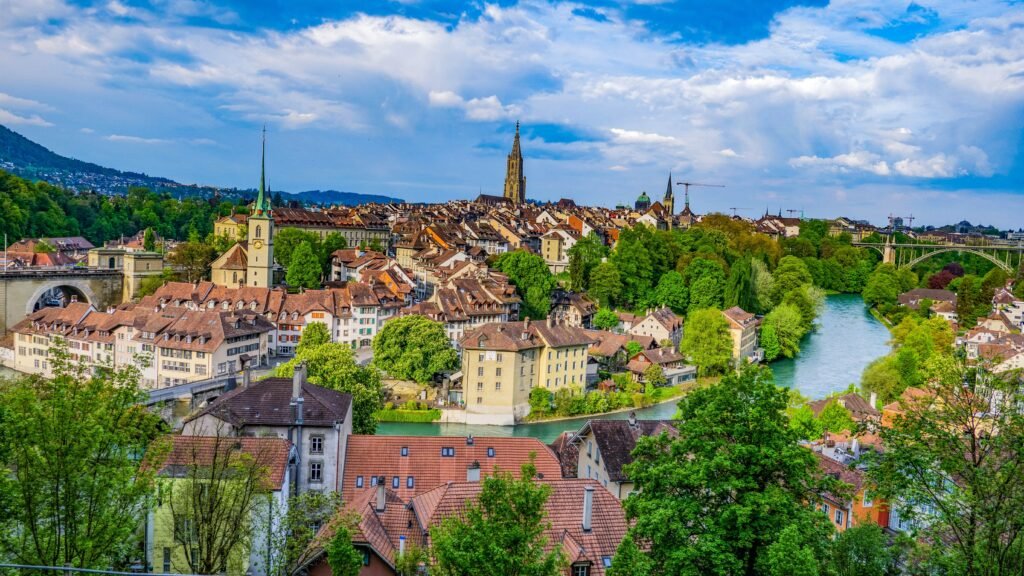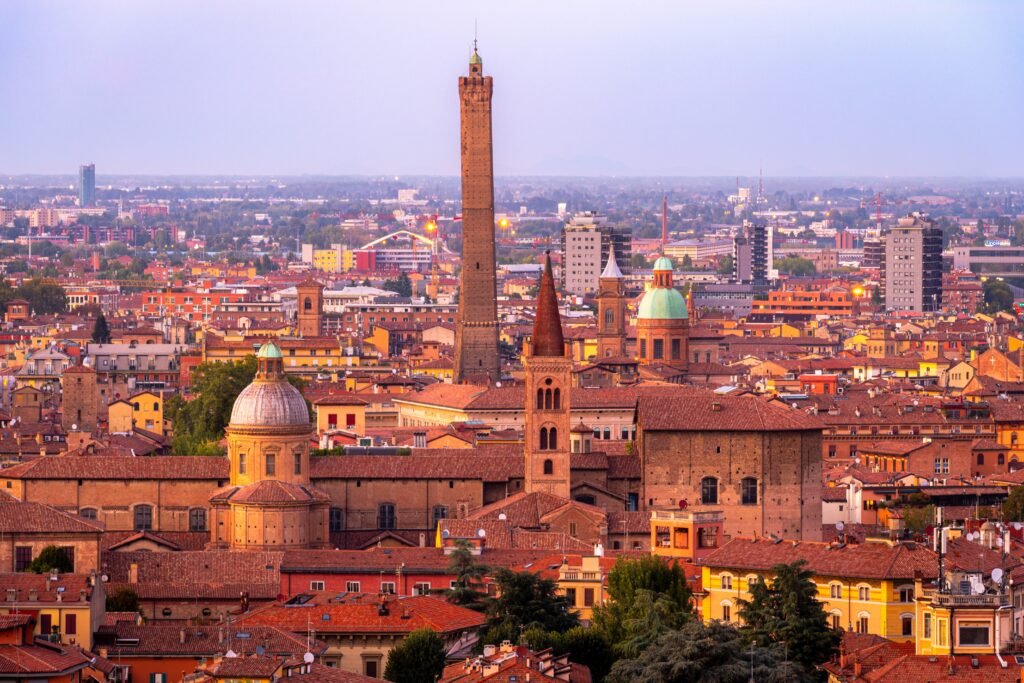Lyon, often hailed as the gastronomic capital of France, is a city that seamlessly blends rich history with contemporary charm. Nestled along the banks of the Rhône and Saône rivers, Lyon offers a multitude of experiences for travelers seeking a taste of French culture, cuisine, and architecture. In this travel blog, we’ll unveil 10 must-do activities that will make your Lyon visit unforgettable. Planning a trip to Lyon? Check out the best flights.
Table of Contents
Wander Through Vieux Lyon (Old Lyon):
Wandering through Vieux Lyon, also known as Old Lyon, is like stepping back in time to the Renaissance era. This historic neighborhood is one of the most charming and well-preserved areas in Lyon, and it offers a wealth of cultural and architectural treasures. Here’s much more about what you can experience when you explore Vieux Lyon:
Architectural Beauty: The heart of Old Lyon is a masterpiece of architectural heritage. The buildings are characterized by their intricate facades, pastel-colored walls, and timbered houses with spiral staircases. The architecture here is a stunning example of medieval and Renaissance design.
Cathédrale Saint-Jean: Dominating the skyline of Vieux Lyon is the Cathédrale Saint-Jean, a magnificent Gothic cathedral. You can explore its intricate interior and even climb to the top for panoramic views of the city.
Traboules: Old Lyon is famous for its traboules, hidden passageways that date back to the 4th century. Originally used by silk weavers to transport their delicate goods, these traboules now offer a unique way to explore the city. Some are open to the public, while others require a guided tour.
Place du Change: This charming square in Old Lyon is lined with cafés and shops, making it a perfect place to sit, relax, and soak in the atmosphere. You’ll often find street musicians and local artists showcasing their talents here.
Musée Gadagne: Housed in a Renaissance palace, the Musée Gadagne is a must-visit for history enthusiasts. It offers insights into Lyon’s history, culture, and puppetry. The museum often hosts temporary exhibitions that provide deeper context to the city’s past.

Rue Saint-Jean: The main pedestrian street of Old Lyon, Rue Saint-Jean is lined with boutiques, souvenir shops, and traditional bouchons, where you can savor authentic Lyonnaise cuisine. Be sure to try local specialties like saucisson de Lyon and praline pastries.
Festivals and Events: Old Lyon comes alive during various festivals and events throughout the year. The most famous is the Fête des Lumières (Festival of Lights) in December when the streets are adorned with stunning light installations. There are also art exhibitions, music festivals, and cultural events that celebrate Lyon’s heritage.
Hidden Courtyards: Beyond the traboules, you’ll discover hidden courtyards adorned with flowers and sculptures. These peaceful oases provide a serene escape from the bustling streets.
Shopping: Old Lyon is a haven for shoppers looking for unique souvenirs. You’ll find artisanal crafts, silk products, and local delicacies in the many boutiques and markets.
Local Life: Vieux Lyon isn’t just a tourist destination; it’s also a vibrant neighborhood where locals live and work. Take a moment to observe daily life, chat with shop owners, and savor the genuine warmth of the Lyonnais people.
In essence, a visit to Vieux Lyon is a journey into Lyon’s past, where you can immerse yourself in its history, culture, and culinary delights. Whether you’re a history buff, an architecture enthusiast, or simply a traveler in search of authentic experiences, Old Lyon is sure to captivate your senses and leave a lasting impression.
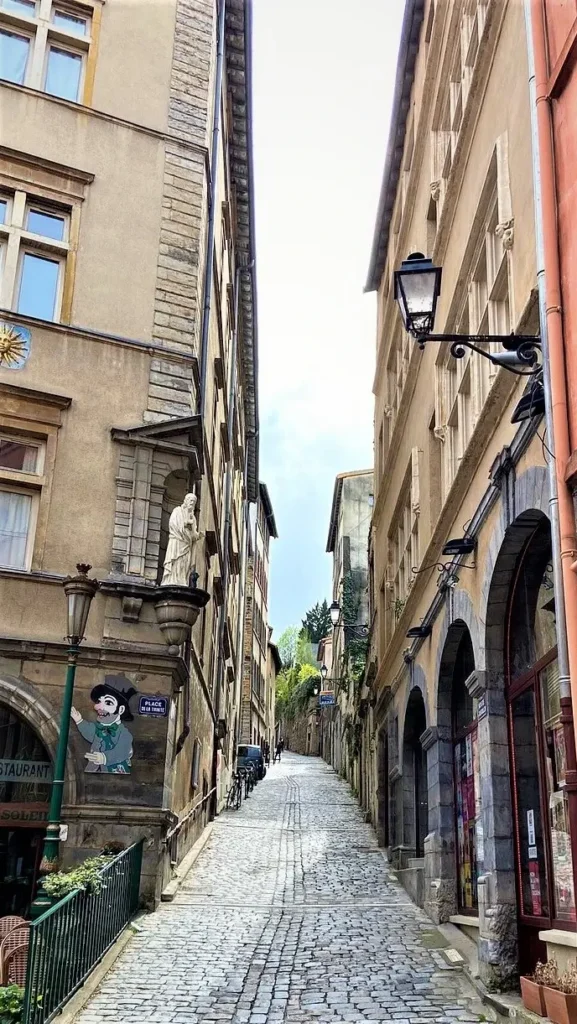
Indulge in Culinary Delights
Indulging in culinary delights in Lyon is an experience like no other. Lyon has earned its reputation as the gastronomic capital of France, and its culinary scene offers a rich tapestry of flavors, from hearty traditional dishes to gourmet innovations. Here’s much more about what makes Lyon a food lover’s paradise:
Bouchons: Lyon is famous for its traditional bouchons, cozy bistros that serve up hearty Lyonnaise cuisine. These establishments are known for their warm and convivial atmosphere, where you can savor classic dishes like coq au vin, quenelles (dumplings), and andouillette (sausage).
Les Halles de Lyon-Paul Bocuse: If you’re a food enthusiast, a visit to Les Halles de Lyon-Paul Bocuse is a must. This indoor food market is a treasure trove of gourmet delights. You can sample and purchase a wide variety of local products, including cheeses, charcuterie, chocolates, and fresh produce.
Michelin-Star Restaurants: Lyon boasts an impressive array of Michelin-starred restaurants. Some of the world’s finest chefs have honed their skills in the city, and you can experience their culinary artistry in venues like Paul Bocuse’s L’Auberge du Pont de Collonges or Christian Têtedoie’s Restaurant Têtedoie
Silk Worker’s Cuisine: Lyon’s culinary heritage is closely tied to its silk industry. You can taste the history of silk weavers in dishes like silk worker’s brain sausages (cervelle de canut) and silk worker’s apron (tablier de sapeur). These unique specialties are a testament to Lyon’s working-class roots.
Wine and Cheese Pairing: Lyon is situated in the Rhône-Alpes region, which is renowned for its wine and cheese. Pair local wines like Côtes du Rhône and Beaujolais with an array of artisanal cheeses for a delightful tasting experience.
Les Toques Blanches Lyonnaises: This association of Lyon’s top chefs ensures high culinary standards are maintained in the city. Look for the “Les Toques Blanches Lyonnaises” seal when dining out for a guarantee of exceptional cuisine
Lyon’s Street Food: Don’t miss the opportunity to sample street food in Lyon. The city is known for its delicious pan-fried potatoes called “les pommes dauphines,” sausage sandwiches, and crepes filled with Nutella or local specialties.
Cooking Classes: Many establishments in Lyon offer cooking classes where you can learn to prepare traditional Lyonnaise dishes. It’s a hands-on way to immerse yourself in the local culinary culture.
Food Festivals: Lyon hosts various food festivals throughout the year, such as the Lyon Street Food Festival and the Salon du Chocolat. These events showcase the diversity of flavors found in Lyon and are a treat for foodies.
Lyon’s Market Culture: Beyond Les Halles, Lyon has numerous open-air markets where you can experience the city’s vibrant market culture. Shop for fresh ingredients and engage with local producers who are passionate about their craft.
In Lyon, food isn’t just sustenance; it’s an art form, a cultural tradition, and a source of immense pride. Exploring the culinary delights of Lyon is a journey through centuries of gastronomic excellence, and it’s an experience that will leave your taste buds delighted and your senses enriched.

Bike Along the Rhône River:
Biking along the Rhône River in Lyon is a delightful and refreshing way to explore the city and its picturesque surroundings. Here’s much more about this cycling experience:
Dedicated Bike Lanes: Lyon is known for its extensive network of bike lanes and paths, making it a bicycle-friendly city. Along the banks of the Rhône River, you’ll find dedicated bike lanes that provide a safe and scenic route for cyclists.
Renting Bikes: If you don’t have your own bike, you can easily rent one from numerous bike-sharing stations throughout the city. Look for the “Vélo’v” stations, which offer affordable rental options for short trips, or consider renting from local bike shops for longer excursions.
Riverside Scenery: As you pedal along the Rhône, you’ll be treated to breathtaking views of the river, its picturesque bridges, and the charming riverbanks. The scenery changes with the seasons, offering a unique experience year-round.
Parc de la Tête d’Or: While biking along the Rhône, consider making a stop at Parc de la Tête d’Or, one of Europe’s largest urban parks. Here, you can explore beautiful gardens, a serene lake, and even a zoo. It’s an excellent place for a leisurely ride or a relaxing picnic.
Pont Raymond Barre: One of the iconic bridges spanning the Rhône, the Pont Raymond Barre offers a picturesque cycling route that takes you from the Presqu’île (Lyon’s city center) to the Confluence District. The bridge itself is an architectural marvel, and the views from it are stunning.
Riverside Cafés: Along the Rhône, you’ll find several cafés and bistros where you can take a break, enjoy a coffee, or savor a meal with a view of the river. It’s an ideal way to immerse yourself in the local culture and cuisine.
Fitness and Recreation: The Rhône River promenade is a popular spot for locals to exercise. You’ll see joggers, rollerbladers, and fellow cyclists enjoying the riverside path. It’s a great place to stay active while taking in the scenery.
Cultural Stops: The Rhône’s banks are also home to cultural institutions such as the Musée des Confluences, a strikingly modern museum that explores science and civilizations. Consider taking a break from biking to explore the exhibits.
Biking Events: Lyon hosts various biking events and races throughout the year, attracting cyclists from all over. If you’re passionate about biking, check the local events calendar for opportunities to participate or watch these competitions
Safety and Accessibility: Lyon is committed to ensuring the safety and accessibility of its bike lanes. Helmets are not mandatory, but they are recommended. Cyclists of all skill levels can comfortably explore the city by bike.
Whether you’re a dedicated cyclist or just looking for a leisurely ride, biking along the Rhône River in Lyon offers a perfect blend of exercise, relaxation, and sightseeing. It’s an eco-friendly and enjoyable way to discover the city’s beauty while staying active. So, rent a bike, hit the riverside paths, and let Lyon’s scenic charm unfold before you.

Visit the Basilica of Notre-Dame de Fourvière:
Visiting the Basilica of Notre-Dame de Fourvière is a truly captivating experience when exploring Lyon. This magnificent basilica, perched atop Fourvière Hill, is an iconic symbol of the city and offers a rich blend of religious significance, architectural beauty, and panoramic views. Here’s much more about what you can expect when you visit Notre-Dame de Fourvière:
Architectural Splendor: The Basilica of Notre-Dame de Fourvière is a masterpiece of 19th-century architecture. It’s characterized by its ornate, Byzantine-influenced design, featuring intricate mosaics, stunning stained glass windows, and elaborate marble work. The basilica’s golden dome gleams in the Lyon skyline.
Religious Significance: The basilica is dedicated to the Virgin Mary, and it holds deep religious importance in Lyon. It was built in the 19th century as a symbol of the city’s gratitude for being spared from the cholera epidemic. Inside, you’ll find a serene atmosphere conducive to contemplation and prayer.
Panoramic Views: The location of Notre-Dame de Fourvière on Fourvière Hill offers breathtaking panoramic views of Lyon. As you ascend the hill, you can gaze out over the entire city, including the rivers, bridges, and historic neighborhoods. The vista is particularly spectacular at sunset and after dark when Lyon’s city lights come to life.
Interior Decor: Inside the basilica, the opulent decoration continues. The walls are adorned with intricate mosaics depicting religious scenes, and the stained glass windows bathe the interior in a soft, colorful glow. Be sure to look up at the grand ceiling, where you’ll find more intricate artwork.

Fourvière Museum: Adjacent to the basilica, you’ll find the Fourvière Museum, which provides insight into the history and significance of the site. It’s a great place to learn more about the basilica’s construction and its role in Lyon’s history.
Crypts: Beneath the basilica, there are crypts that house religious relics and provide additional space for reflection and prayer. Exploring the crypts offers a deeper connection to the religious heritage of the site.
Pilgrimage Site: Notre-Dame de Fourvière is not only a place of worship but also a pilgrimage site. It attracts visitors from all over the world who come to pay their respects, seek spiritual solace, or simply admire its grandeur.
Events and Concerts: The basilica hosts various cultural events and concerts throughout the year. Attending a concert here is a unique experience, as the acoustics within the basilica are exceptional.
Funicular Ride: To reach the basilica, you can take a funicular from Vieux Lyon. The ride itself is an experience as it ascends the steep hillside, providing scenic views of the city along the way.
Surrounding Grounds: The basilica is surrounded by beautifully landscaped grounds, making it an ideal place for a leisurely stroll. You can also explore the nearby Tour Métallique (metal tower) and the Roman ruins of ancient Lugdunum.
Visiting the Basilica of Notre-Dame de Fourvière is not only a chance to explore Lyon’s rich religious heritage and architectural beauty but also an opportunity to witness the city’s stunning vistas from a unique vantage point. Whether you’re interested in history, architecture, or simply seeking a serene place for reflection, Notre-Dame de Fourvière offers an unforgettable experience in Lyon.

Explore the Confluence District:
Exploring the Confluence District in Lyon is like stepping into the future. This modern, innovative, and sustainable urban development area is a stark contrast to the city’s historic quarters, offering a glimpse of Lyon’s contemporary side. Here’s much more about what you can expect when you explore the Confluence District:
Modern Architecture: The Confluence District is renowned for its cutting-edge architecture. You’ll find striking contemporary buildings designed by some of the world’s leading architects. Notable structures include the orange cube-shaped building known as the Confluence Museum (Musée des Confluences) and the whimsical orange tree-inspired building of the Euronews headquarters.
Confluence Museum (Musée des Confluences): This museum is not only an architectural marvel but also a treasure trove of natural history, anthropology, and science exhibits. It’s a fantastic place to delve into the mysteries of the universe, Earth’s history, and the diversity of cultures. The museum often hosts temporary exhibitions that are both informative and visually captivating.
Shopping: The Confluence District is home to one of Lyon’s most modern shopping complexes, the Confluence Shopping Center. Here, you can shop for high-end fashion, accessories, and electronics. There’s also a wide selection of restaurants and cafes where you can take a break from shopping.
The Orange Cube (La Sucrière): This former sugar warehouse turned contemporary art space is a hub for contemporary art exhibitions, events, and installations. Its distinctive cube shape stands out against the industrial backdrop of the Confluence District.
Green Spaces: Despite its modernity, the Confluence District incorporates green spaces and sustainable design. The district’s park, called Parc Antonin Poncet, provides a tranquil oasis amidst the urban environment, complete with art installations and waterfront views.
Riverside Walks: The district is situated at the confluence of the Rhône and Saône rivers, and it offers pleasant riverside promenades. You can take a leisurely stroll along the waterfront, enjoying the views of the rivers and the cityscape.
Aquarium de Lyon: Located within the Confluence District, the Aquarium de Lyon is an excellent place for families and aquatic enthusiasts. It houses a diverse collection of marine life, including colorful fish, sharks, and even sea turtles.
Floating Gardens: In the Confluence District, you’ll come across floating gardens called “Les Rives.” These lush, waterborne gardens provide a unique and ecologically friendly environment for plants, birds, and aquatic life.
Sustainable Living: The Confluence District is a model for sustainable urban development. Many of its buildings incorporate green roofs, solar panels, and energy-efficient features. You can learn about sustainable living practices through various exhibitions and initiatives.
Events and Festivals: Throughout the year, the Confluence District hosts a variety of events, from outdoor concerts to food festivals. Check the local event calendar for happenings during your visit.
Exploring the Confluence District is a journey into Lyon’s forward-thinking and modern side. It’s an excellent place to witness how Lyon has embraced sustainability, contemporary architecture, and cultural diversity, all while retaining its core values and historical charm. Whether you’re interested in art, architecture, shopping, or simply enjoying a scenic riverside walk, the Confluence District offers a unique and memorable experience in Lyon.

Get Lost in Parc de la Tête d’Or
Getting lost in Parc de la Tête d’Or is an enchanting experience that allows you to escape the city’s hustle and immerse yourself in nature and tranquility. This expansive urban park in Lyon is not only a haven for outdoor enthusiasts but also a place where visitors of all ages can find something to enjoy. Here’s much more about what you can expect when you explore Parc de la Tête d’Or:
Vast Green Spaces: Parc de la Tête d’Or is one of the largest urban parks in France, covering approximately 290 acres. Its vast green lawns, tree-lined avenues, and lush gardens provide ample space for relaxation and outdoor activities.
Lake and Boating: The park features a large, serene lake where you can rent rowboats and paddleboats. It’s a perfect place to enjoy a leisurely boat ride while admiring the park’s scenic beauty. Ducks and swans often grace the waters, adding to the park’s charm.
Floral and Botanical Gardens: Parc de la Tête d’Or boasts beautiful botanical gardens with a wide variety of plant species. You’ll find themed gardens, including a rose garden, a Japanese garden, and a botanical garden with exotic plants. The park is especially stunning in the spring when flowers are in bloom.
Zoo de Lyon: Located within the park, the Zoo de Lyon is a family-friendly attraction featuring a diverse collection of animals from around the world. It’s a great place to learn about wildlife conservation and observe animals in spacious enclosures.
Orangerie: The Orangerie building is a historic structure within the park that hosts art exhibitions and cultural events. Its architecture and surrounding gardens make it a picturesque spot for a leisurely stroll.
Children’s Playground: Parc de la Tête d’Or offers a large and well-equipped playground, making it an ideal destination for families. Kids can enjoy swings, slides, and other play structures.

Jogging and Cycling: The park’s extensive pathways are perfect for jogging and cycling. Many locals and visitors come here to get their daily exercise while surrounded by nature.
Picnicking: Numerous picnic areas are scattered throughout the park, allowing you to enjoy a meal amidst the greenery. It’s a popular spot for picnics, so be sure to bring a blanket and some local treats.
Tête d’Or Lakehouse: This charming building by the lake serves as a café and restaurant. You can relax here with a cup of coffee, enjoy a meal, or simply take in the scenic views.
Events and Concerts: Parc de la Tête d’Or hosts various events throughout the year, including outdoor concerts, art exhibitions, and cultural festivals. Check the park’s event calendar to see if there are any special happenings during your visit.
Relaxation and Meditation: The park’s peaceful atmosphere and lush surroundings make it an ideal place for meditation, yoga, or simply finding a quiet spot to unwind and enjoy nature.
Free Admission: Perhaps one of the best aspects of Parc de la Tête d’Or is that it’s open to the public and admission is free, making it an accessible and inclusive destination for all.
Whether you’re seeking outdoor adventure, a peaceful escape, or a family-friendly outing, Parc de la Tête d’Or offers a diverse range of activities and natural beauty. It’s a true gem in the heart of Lyon, inviting you to explore its tranquil landscapes and enjoy moments of relaxation and recreation.
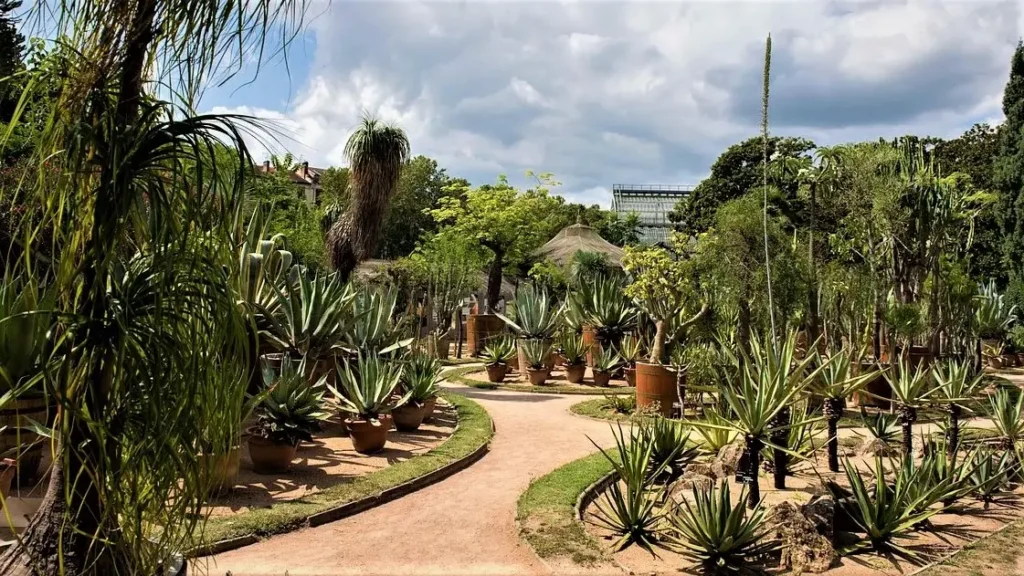
Discover the Traboules
Discovering the traboules of Lyon is like embarking on a historical treasure hunt through the city’s secret passageways. These hidden, winding passages offer a unique and captivating way to explore Lyon’s heritage, connecting streets, courtyards, and buildings. Here’s much more about what you can expect when you set out to discover the traboules:
What are Traboules?: Traboules are a distinctive feature of Lyon, particularly in the Vieux Lyon (Old Lyon) and Croix-Rousse neighborhoods. They are a network of narrow, covered passageways that date back to the Middle Ages. Originally, traboules served as shortcuts for silk workers to transport their delicate fabrics between buildings and avoid exposure to the elements.
Hidden Entrances: Traboules are hidden in plain sight. While some are marked with signs or plaques, others require a keen eye to spot the entrances. Many of them are nestled within residential buildings and may look like ordinary doorways.
Vieux Lyon Traboules: Vieux Lyon is renowned for its traboules, and it’s a fantastic place to begin your exploration. You can start at 27 rue Saint-Jean, one of the most famous traboules in Lyon, which will lead you to a series of interconnected passages.
Croix-Rousse Traboules: The Croix-Rousse neighborhood also boasts a network of traboules. Here, you’ll find traboules that are historically significant for their role in the silk industry. Some are adorned with plaques detailing their history.
Architecture and Design: Traboules vary in architectural style, from simple and functional to ornate and decorative. As you explore, pay attention to the details of the passageways, including the stone carvings, wooden doors, and wrought-iron railings.
Courtyards and Inner Gardens: Many traboules lead to hidden courtyards and inner gardens, which are often adorned with flowers and sculptures. These tranquil spaces provide a serene escape from the bustling streets of Lyon.
Preservation and Restoration: Lyon has made efforts to preserve and restore its traboules to maintain their historical significance. Some traboules are open to the public during certain hours, while others require guided tours or are only accessible to residents.
Guided Tours: Taking a guided traboules tour is an excellent way to learn more about their history and significance. Knowledgeable guides can share stories about the silk industry, Lyon’s resistance during World War II, and the role traboules played in these events.
Art and Cultural Exhibitions: Some traboules have been transformed into art galleries or cultural spaces, hosting exhibitions, workshops, and events. Keep an eye out for any cultural happenings while exploring.
Photography Opportunities: Traboules provide excellent photo opportunities. The interplay of light and shadow, the architectural details, and the sense of mystery within these passageways make for captivating compositions.
Respect and Courtesy: When exploring traboules, it’s essential to be respectful of residents’ privacy. Keep noise levels down, avoid touching personal belongings, and follow any posted rules or hours of operation.
Discovering the traboules of Lyon is like uncovering the city’s hidden history and secrets. It’s a journey that takes you back in time while allowing you to appreciate the architectural and cultural heritage that makes Lyon unique. So, be prepared to embark on an adventure as you navigate these intriguing passageways and experience the charm of Lyon’s past.
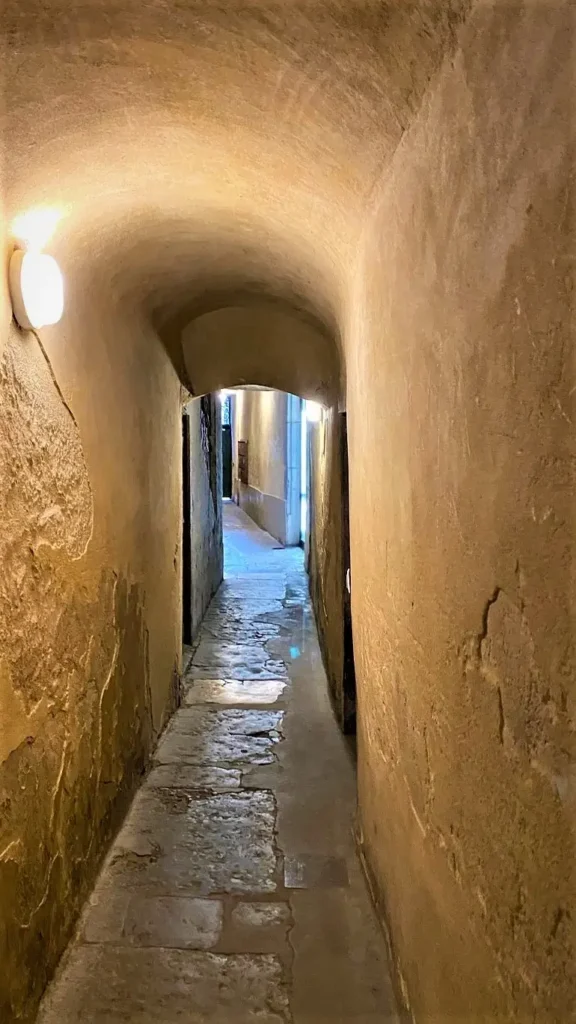
Attend a Traditional Silk Weaving Workshop
Attending a traditional silk weaving workshop in Lyon is a fascinating and educational experience that provides insights into the city’s rich silk heritage. Lyon has been a center of silk production and innovation for centuries, and it’s renowned for its luxurious silk fabrics. Here’s much more about what you can expect when you attend a traditional silk weaving workshop in Lyon:
Historical Significance: Lyon’s association with silk dates back to the Renaissance era when Italian silk weavers settled in the city. Over the centuries, Lyon became one of Europe’s primary silk production centers, known for its exquisite craftsmanship and quality.
The Maison des Canuts: The Maison des Canuts (House of the Silk Workers) is a significant institution in Lyon dedicated to preserving the art of silk weaving. It serves as a hub for silk-related activities, including workshops, demonstrations, and exhibitions.
Workshop Tours: When you visit the Maison des Canuts, you can take guided tours of the workshop. Knowledgeable guides will lead you through the various steps of the silk weaving process, from preparing the loom to creating intricate patterns.
Loom Demonstrations: One of the highlights of a silk weaving workshop is witnessing the intricate work done on the looms. Skilled artisans use traditional Jacquard looms to weave intricate patterns and designs, showcasing the precision and artistry involved in silk production.
Hands-On Experience: Some workshops offer hands-on experiences, allowing you to try your hand at weaving silk. Under the guidance of experts, you can weave a small piece of silk fabric, gaining an appreciation for the complexity of the craft.
Silk History and Culture: The workshops often delve into the history of silk in Lyon and its cultural significance. You’ll learn about the impact of silk on Lyon’s economy, fashion industry, and art scene.

Pattern and Design: Silk weaving workshops highlight the art of creating intricate patterns and designs. You’ll gain an understanding of how patterns are developed and how color choices impact the final product.
Silk Products: Many workshops have on-site boutiques where you can purchase exquisite silk products, including scarves, ties, textiles, and accessories. These items make for unique souvenirs or gifts.
Customization: Some workshops offer the option to customize silk products. You can choose patterns, colors, and fabrics to create a unique silk piece tailored to your preferences.
Supporting Local Craftsmanship: By attending a silk weaving workshop and purchasing silk products, you’re supporting local artisans and preserving Lyon’s silk heritage. Your contribution helps sustain this traditional craftsmanship for future generations.
Events and Exhibitions: The Maison des Canuts and other silk workshops often host events, exhibitions, and special demonstrations related to silk and textiles. Check their schedules to see if there are any upcoming events during your visit.
Attending a traditional silk weaving workshop in Lyon provides a glimpse into the city’s rich history and cultural heritage. It’s a chance to witness the meticulous craftsmanship that goes into creating some of the world’s most exquisite silk fabrics. Whether you’re an art enthusiast, a history buff, or simply interested in experiencing Lyon’s unique traditions, a visit to a silk weaving workshop is both educational and enriching.

Sip Wine in the Beaujolais Region
Sipping wine in the Beaujolais region is a delightful and immersive experience for wine enthusiasts and travelers seeking a taste of French viticulture. Located just north of Lyon, the Beaujolais region is renowned for its light, fruity, and vibrant red wines, particularly the famous Beaujolais Nouveau. Here’s much more about what you can expect when you explore the Beaujolais wine country:
Geography and Terroir: Beaujolais is situated in the eastern part of France’s Burgundy region. Its diverse landscape includes rolling hills, picturesque vineyards, and charming villages. The region’s terroir, with its granite-based soils, plays a significant role in shaping the character of the wines.
Grape Variety: The primary grape variety cultivated in Beaujolais is Gamay Noir à Jus Blanc, or simply Gamay. This grape is known for producing wines that are light in color and body, with bright red fruit flavors.
Wine Styles: Beaujolais offers a range of wine styles, from the fresh and fruity Beaujolais Nouveau, released annually on the third Thursday of November, to the more complex and age-worthy Cru Beaujolais. The region is divided into ten Crus, each with its distinct terroir and character.
Wine Tasting: Visiting Beaujolais provides ample opportunities for wine tasting. You can explore the region’s numerous vineyards, wineries, and tasting rooms to sample a wide range of Beaujolais wines. Don’t forget to try the iconic “cru” wines from villages like Fleurie, Morgon, and Moulin-à-Vent.
Vineyard Tours: Many wineries in Beaujolais offer guided tours of their vineyards and cellars. These tours often provide insights into the winemaking process, the history of the region, and the unique characteristics of each Cru.
Food and Wine Pairing: Beaujolais wines pair wonderfully with local dishes. Be sure to enjoy regional specialties such as coq au vin, quenelles, and charcuterie while savoring a glass of Beaujolais wine. The region is known for its farm-fresh produce, making it an ideal destination for culinary explorations.
Village Markets: Beaujolais villages often host markets where you can taste and purchase local products, including wine, cheese, and artisanal goods. These markets provide an authentic and immersive experience.
Wine Festivals: Beaujolais hosts several wine-related events and festivals throughout the year. The most famous is the Beaujolais Nouveau celebration, marked by lively festivities, music, and fireworks.
Scenic Routes: Exploring Beaujolais offers picturesque drives through vineyard-covered hills, charming villages, and historic châteaux. Consider taking the Route des Vins du Beaujolais to discover the region’s beauty.
Wine Education: If you’re interested in deepening your wine knowledge, some wineries and organizations in Beaujolais offer wine education programs and workshops, including tastings led by sommeliers and wine experts.
Lodging Options: The Beaujolais region offers various lodging options, including charming bed and breakfasts, boutique hotels, and even vineyard accommodations. Staying in the heart of wine country provides an immersive experience.
Sustainability: Many Beaujolais winemakers are committed to sustainable and eco-friendly practices, emphasizing organic and biodynamic farming methods. Consider visiting wineries with a focus on environmental responsibility.
Sipping wine in the Beaujolais region is not just about tasting wine; it’s about embracing a rich wine culture, exploring beautiful landscapes, and enjoying the region’s culinary traditions. Whether you’re a wine connoisseur or simply appreciate the pleasures of good wine and food, a visit to Beaujolais promises a memorable and enjoyable experience.

Experience Lyon’s Festival Scene
Lyon’s festival scene is vibrant and diverse, offering a wide range of cultural, artistic, and culinary events throughout the year. The city’s festivals are a reflection of Lyon’s rich cultural heritage and its commitment to celebrating creativity and diversity. Here’s much more about what you can expect when experiencing Lyon’s festival scene:
Fête des Lumières (Festival of Lights): Lyon’s most famous festival takes place in early December. During this enchanting event, the city is illuminated with stunning light installations, transforming streets, buildings, and landmarks into works of art. Millions of visitors from around the world flock to Lyon to witness this magical spectacle.
Nuits de Fourvière: Held in the ancient Roman theater of Fourvière, this summer festival is a cultural extravaganza featuring a diverse lineup of performances, including music, dance, theater, and cinema. The setting of the Roman theater adds a unique ambiance to the shows.
Les Nuits Sonores: Lyon’s electronic music and digital arts festival, Les Nuits Sonores, takes place in May. It features an array of electronic music performances, art installations, and workshops, attracting electronic music enthusiasts from across Europe.
Biennale de Lyon: This contemporary art biennial is one of the most prestigious in the world. It showcases innovative and thought-provoking works by international artists across various mediums, including visual arts, performance, and installation art.
Lyon BD (Lyon Comics Festival): For comic book enthusiasts, Lyon BD is a must-attend event. This festival celebrates the art of comics and graphic novels with exhibitions, workshops, book signings, and the opportunity to meet renowned comic artists.
Les Subsistances Festival: Les Subsistances is a contemporary arts center in Lyon that hosts various festivals and events throughout the year. These include theater performances, dance shows, art installations, and multidisciplinary exhibitions.
Lyon Street Food Festival: Foodies flock to this festival, which celebrates street food from around the world. It’s an opportunity to savor a diverse array of international cuisines, from gourmet burgers to authentic Asian street dishes.

Festival Lumière: This annual film festival pays tribute to the Lumière brothers, inventors of the cinematograph and pioneers of cinema. It features screenings of classic and contemporary films, as well as appearances by renowned filmmakers and actors.
Jazz à Vienne: Located just outside Lyon, Jazz à Vienne is a renowned jazz festival that draws top jazz musicians and bands from around the world. The festival takes place in the stunning setting of the ancient Roman theater in Vienne.
Lyon International Dance Biennial: This biennial event showcases the diversity of contemporary dance through a series of performances, workshops, and masterclasses. It’s an excellent opportunity to witness cutting-edge dance productions.
Carnaval de Lyon: Lyon’s carnival takes place in March and is a colorful and festive celebration with parades, music, costumes, and street performances. It’s a family-friendly event that brings the city to life with a joyful atmosphere.
Lyon Dance Festival: This festival, dedicated to contemporary dance, features performances by both emerging and established choreographers and dance companies. It offers a platform for innovative and boundary-pushing dance works.
Lyon’s festival scene caters to a wide range of interests and passions, from the visual arts and music to food and cultural traditions. Whether you’re a culture aficionado, a music lover, a foodie, or simply looking for a vibrant and memorable experience, Lyon’s festivals offer something for everyone. Be sure to check the festival calendars and plan your visit to coincide with one of these exciting events for an unforgettable time in Lyon.
Things to do in Lyon: Conclusion
Lyon, with its fusion of history, culture, and cuisine, is a city that beckons travelers to explore its many facets. Whether you’re a foodie, history buff, or simply seeking an authentic French experience, Lyon has something to offer everyone. So pack your bags and get ready to immerse yourself in the delights of this enchanting city. Travel with the best travel insurance. Your Lyon adventure awaits!
Check out the other blogs.

